
Talks
Last update: January 2024
My specific research experience with Jupiter's clouds---and
the gases that form them---also relates to
conditions in the early protoplanetary disk and dynamics of
giant planet atmospheres. Understanding the diversity among
our own planetary atmospheres is key to understanding fresh
observations of the staggering number of known
exoplanets, each unique.
Two science talk themes are available for the 2024 season. The talks
can be geared towards audiences at the levels of Jupiter
specialists to the general
public.
|
|
The Outer Planet Atmospheres Legacy (OPAL)
program with Hubble was started in 2014 with the goal
of studying time-domain phenomena in Jupiter, Uranus, and
Neptune, with Saturn added in 2018 once the Cassini
spacecraft was de-orbited. Key areas of study are heat
transport and climate circulation, atmospheric structure
and evolution, composition, the formation of clouds and
hazes, impact processes, and impactor populations. Once a
year, the OPAL program images each of our four outer
planets, producing pairs of global maps in multiple
filters, which are made available at
the MAST archive. The OPAL team (Simon,
Wong, and Orton) have used the data to discover new dark
spots on Neptune, discover a UV-dark oval in Jupiter's
southern polar haze cap, measure changes in Jupiter's
Great Red Spot over time, detect fine-scale waves,
chronicle shifts in haze and cloud layers on all four
planets, measure jet streams, and study the structure and
evolution of convective storms. The data have also
provided a valuable resource enhancing the science return
from the Juno and New Horizons spacecraft missions, also
supplementing observations from a growing list of
observatories including JWST, Kepler, Spitzer, VLA, Keck,
ALMA, IRTF, VLT, and Gemini.

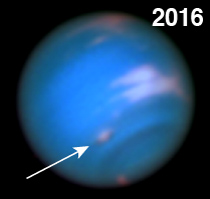
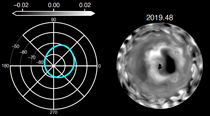
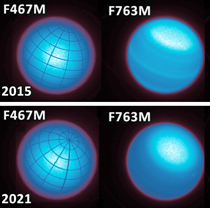
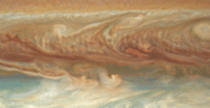

Science highlights from in-situ observations of variable
atmospheric composition will be presented, ranging from
mysterious fluctuations in oxygen and methane on Mars, to
unexpectedly deep depletions of cloud-forming gases on Jupiter.
In future years, probes may visit Saturn, Uranus, and Neptune to
solve mysteries revealed by current remote sensing and modeling
studies. An exciting opportunity for the new century is the
possibility to send small secondary probes into giant planet
atmospheres, to obtain in-situ data at multiple locations.
Composition measurements by small probes would be enabled by
chip-scale gas sensors, capable of accurate composition
measurements but with much smaller resource requirements compared
to flagship-class mass spectrometers.
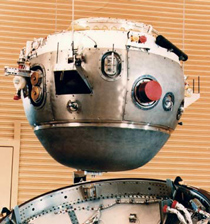

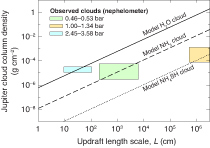
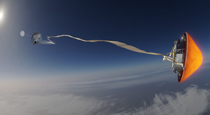


Lightning signals of different types have been detected
by every spacecraft that visited Jupiter since Voyager
in 1979. The Juno mission currently in orbit around
Jupiter has returned a wealth of new data on lightning
phenomena. Juno's Microwave Radiometer has detected
thousands of radio bursts known as "sferics." Given the
distance to the spacecraft and the frequency of
emission, the signals imply an incredibly powerful
source strength, comparable to the rarest high-energy
events in terrestrial storms. As on Earth, Jupiter's
lightning is more common in some locations like cyclonic
belts and storms---but rare in other locations---
revealing that heat transport by convection is not
homogeneous. Combining Juno and HST data reveals
the cloud structure in storms associated
with intense clusters of sferics. Juno has also
discovered UV emissions that may resemble terrestrial
sprites, and shallow lightning that may require exotic
"mushballs" composed of a slush of ammonia and water
ices.
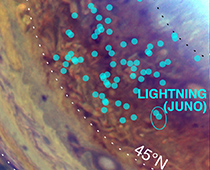



|